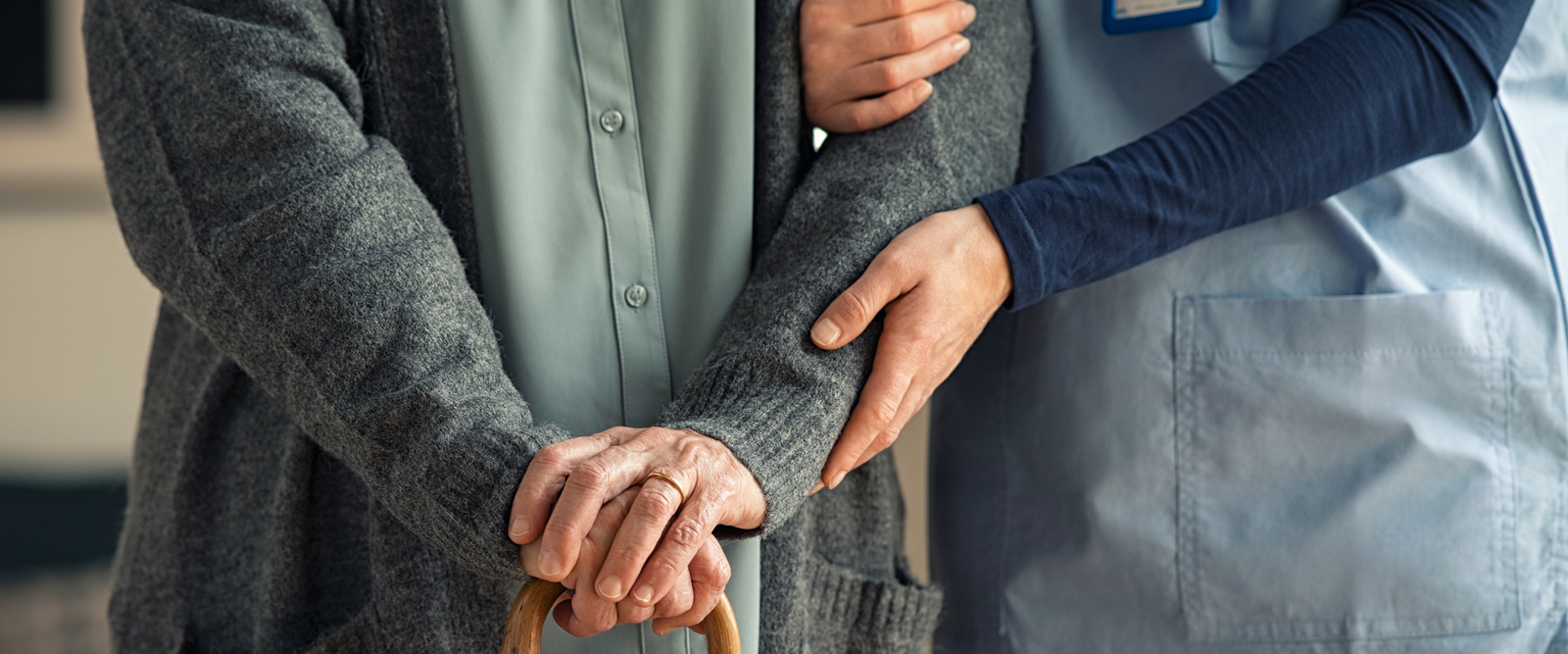What Is Hospice Care?
An expert explains how hospice care can help ease the stress of end-of-life care for patients and their families.


Hospice, a special type of end-of-life care, recently drew national attention after the Carter Center announced that former President Jimmy Carter had opted to begin hospice care at his home instead of an extended stay in the hospital.
But while more than 1.72 million people received hospice care in 2020, most people aren’t familiar with what it entails. Hospice provides comprehensive care for a person who is terminally ill, often in their home, with the goal of providing comfort and a better quality of life.
“Hospice care is person-centered, with a focus on dignity for the patient, having their wishes honored, and providing a support system for the family caregivers,” says Dr. Cynthia Pan, chief of the division of geriatrics and palliative care medicine at NewYork-Presbyterian Queens. “The end of life is still a part of life. Hospice can help show people that instead of being afraid, we should embrace and celebrate it.”
Health Matters spoke with Dr. Pan, who is also an associate professor of clinical medicine at Weill Cornell Medicine, to learn more about hospice care and dispel misconceptions about it.
What is hospice care, and how is it different from palliative care?
Dr. Pan: Hospice falls under the umbrella of palliative care. Palliative care is specialized medical care for anyone with a serious illness. The goal is to provide extra layers of support to help ease a patient’s pain, symptoms, and stress, and help them understand and approach medical decisions they need to make.

Dr. Cynthia Pan
While palliative care may involve treatment intended to cure a serious illness, hospice care is specifically for people who have a limited life expectancy of approximately six months or less, where a cure isn’t an option. Intensive treatment of a disease stops, but hospice care can help manage symptoms and support the patient and family as a unit. Medicare, which determined the six-month criteria, covers hospice care, along with Medicaid and most private insurance plans.
What does hospice care look like?
A doctor has to certify a patient for hospice, and the admitting nurse will go to their home for evaluation. A regular nurse visits weekly or more often, depending on symptoms, and all medications are sent to the patient’s home. Additional help may be provided by a social worker, a hospice physician, pastoral care, a home health aide, or other support, including a 24/7 hotline patients or families can call.
There are four levels to hospice care.
- Routine home care
The most common level, routine home hospice care is for patients who are generally stable and whose symptoms can be controlled fairly easily. - General inpatient care
This is for short-term management of more severe pain or symptoms that need to be treated in a medical facility, such as an inpatient hospice unit. - Continuous home care
This is for patients who may be close to death or experiencing many symptoms but wish to remain home. A nurse can provide support at home short-term, and care is evaluated daily. - Respite care
This is tied to caregiver needs, where patients receive temporary care in a nursing home or inpatient hospice facility so that family or caregivers can take a break.
Who can receive hospice care?
People with various advanced-stage conditions where there is no cure may consider hospice a more peaceful healthcare option. Some examples of these conditions include advanced dementia, cancer, or end-stage kidney disease. Usually they’ve lost their ability to perform basic functions, are unable to maintain an appetite to get adequate nutrients, or are frequently readmitted to the hospital.
Even before a serious illness, people should consider an advance directive, which is a type of written or oral instruction that states what kind of medical treatment you’d want if you can’t make the decisions yourself.
If you do enroll in hospice and at some point you don’t want it anymore, you can opt out. Some patients who end up stabilizing after six months may follow up with their doctor to see if discontinuing hospice care makes sense for them.
“Hospice is really about the hope of providing the patient with comfort and dignity and respecting their wishes.”— Dr. Cynthia Pan
What are some misconceptions about hospice?
A common misconception is that hospice means that the medical team is giving up or there’s no hope.
It’s really about the hope of providing the patient with comfort and dignity and respecting their wishes. By doing so, patients often respond better than they would have under invasive treatments. We all want Plan A to work out, but we need to be realistic and have a plan that focuses on the patient’s feelings. We want to know what’s most meaningful for the patient — it could be quality or quantity of life, the ability to do things for themselves, or to achieve a goal or some things on their bucket list.
Another misconception is that people think they’re being shipped off somewhere. The majority of hospice care is provided at home, where most patients in that situation prefer to be. Hospice care is committed to supporting patients in their homes so they can have a peaceful place where they are comfortable and can spend meaningful time with loved ones.
For some patients or families, being at home may not be their preference, and there are inpatient hospice options as well. At NewYork-Presbyterian Queens, we acknowledge the diversity of our communities and take a culturally sensitive and humble approach with our patients who may not be familiar with hospice.
What would you want a loved one of someone considering hospice to know?
We all have fears, especially around death and the end-of-life process. But don’t let fear get in the way, and look at things from a standpoint of compassion.
Having an experienced team to walk you through things you want to know or didn’t know to ask is very helpful. It’s an interdisciplinary effort; it’s not only doctors and nurse practitioners, but also social workers, chaplains, pharmacists, dietitians, therapists — they’re all there to support the patient and family through a difficult time.
We place importance on learning what matters most to the patients and their families, keeping in mind who the patient is, not just what their disease is.
Everybody has a different set of goals. Some people want to see a Broadway show. Some people want to stay at home and spend time with their family. It’s about honoring their wishes, and it’s about people helping people.
Additional Resources
Learn more about adult palliative care and pediatric palliative care services at NewYork-Presbyterian.

